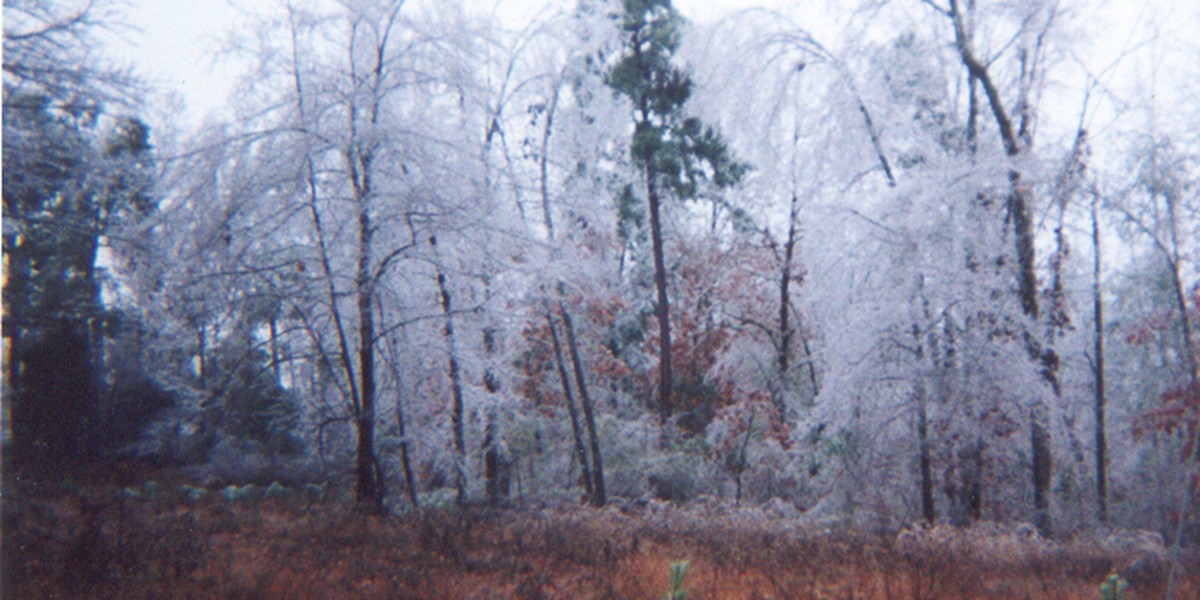
Published December 1, 2000 By ARBORILOGICAL SERVICES
When the winds begin to blow out of the north, you can bet winter is just around the corner. A wide variety of wildlife mark the coming of winter. Red-tailed hawks, Northern harriers, American kestrels, and mixed flocks of "black-birds" are a tell-tail sign that Jack Frost is venturing south. These birds are commonly spotted in the urban landscape of the Dallas/Fort Worth area, and they are some of the first migrants moving south to escape the colder temperatures, shorter days, and lack of food resources. Watch for large flocks of "black-birds" in open fields, and cut over agricultural lands. The majestic red-tailed hawk and other large birds of prey can be seen atop telephone poles, light poles, and fence posts. Often mistaken for a pigeon or dove, the mighty American kestrel can be found hunting grasshoppers, house sparrows, and small mice from telephone lines. Keep your eyes peeled to see all of these awesome creatures! Also, keep a pair of binoculars in your car, and reference a good bird guide when needed.
Another beautiful creature that marks the coming of cold temperatures is the Monarch butterfly. These insects also utilize the north winds to push them south into Mexico where they overwinter in the same tree groves every year. You can find Monarchs swarming around native flowering plants. Consult a native plant guide to find out which species you can plant to provide food for migrating Monarchs!
We are all stewards of the land…even if we live in the city or the suburbs! During the winter, make it a point to do some simple things to help our urban wildlife species and migrating individuals make it through the colder period of the year. Here are some simple things you can do to help a wide variety of species.
Have you ever wondered where all the reptiles and amphibians go during the winter? These little guys hold up during the cold temperatures under decaying logs and organic matter, buried in mud banks, and tucked in every warm place they can find. Here they hide and their metabolic rates decrease to allow them to go without food for long periods. On warm and sunny days during the winter, many reptiles such as the Texas rat snake, northern fence lizard, green anole, and ornamental box turtle can be seen laying on warm stones or concrete. Amphibians are associated with moisture gradients and are found under organic matter, decaying logs, and brush piles. Common species you might hear or see are the green and gray tree frogs, gulf-coast toads, and salamanders. You can help these creatures during the winter by leaving piles of brush at the back of your properties. Down woody debris can be left in your yard where possible. These guys also find refuge in firewood piles and under mulch piles. Stone fences or mortar-less walls give them places to hide and areas to bask. It's the little things that make a difference for wildlife!
Birds have extremely high metabolic rates. This means they have to eat a lot, every day. The average body temperature of birds is around 107 degrees Fahrenheit, and maintaining this body temperature is difficult during the winter. Birds conserve heat by spending the night in cavities, roosting in colonies, and insulating nests and cover areas. You can help by providing nesting material, such as cotton or natural cloth fibers. Staple these materials to the sides of bird feeders so that the birds can pull away what they need. Try placing these materials in onion bags around feeders as well. It is also a good idea to conserve trees that provide a lot of cover. Eastern Red Cedar and Deodar Cedar are great trees in which birds can roost during the winter. Consider leaving dead or dying trees on your property where safety is not a concern. These trees will allow woodpeckers to create cavities for them and other species to live in. Dead snags also provide roosts from which birds of prey can hunt. Some of the winter birds we might see are the northern cardinal, tufted titmouse, Virginia creeper, Northern mockingbird, or brown thrasher. Also, take the time to move feeders to the south side of your home or property. This will allow birds to feed without having to battle the harsh north winds. It's the little things that make a difference for wildlife!
Mammals in our area enjoy fairly mild winters compared to other parts of the country. Brush piles and unmown lawn areas are great cover areas that small mammals utilize during the winter. Species such as the field mouse, white-footed mouse, eastern wood rat, and deer mouse will use grasses to line burrows and dens. Our urban squirrels and flying squirrels also depend on cavities for use during the winter. Again, preserving snag where possible is a great idea. Squirrels can also use natural cloth fibers to line nests and cavities. You can leave these items in wooden boxes at the base of trees along with feed corn for a quick, high-energy snack. Raccoons and opossums can use these materials as well. When the temperature really drops, these larger mammals will stay dormant. Helping to provide them with a warm home is the least we can do. It's the little things that make a difference for wildlife!

